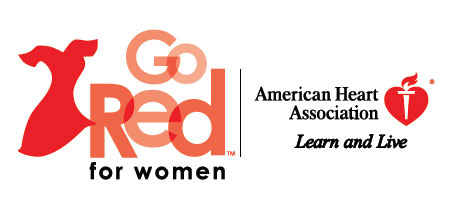Go Red for Women’s Heart Disease Month

Nursing majors in the Lienhard School of Nursing (LSN) learn early into their nursing courses that women present heart attacks differently than men; women may experience a heart attack without realizing it because they may not feel any chest pains like men. Though National Wear Red Day passed already for this year, the American Heart Association uses the whole of February to highlight women’s heart disease.
Cardiovascular Disease (CVD), a.k.a. heart disease, is a group of many disorders related to the heart and blood vessels. The American Heart Association (AHA) lists heart attacks, ischemic strokes (where the brain cells are deprived of oxygen and blood), heart failure, arrhythmias (abnormal heart beats), and heart valve problems as the main categories within CVD on its website.
The AHA campaign for February, which began in 2004, aims to spread awareness to the uniqueness of women’s heart disease as well as action to save lives. For many years, males were the primary research subjects when studying CVD and other diseases, so medical researchers did not understand that women present different signs and symptoms, especially for heart attacks.
At Pace, the leader in spreading the campaign is Dr. Karen Haghenbeck-Nunnink, a professor at LSN and the director for its RN4 undergraduate nursing program.
Dr. Haghenbeck-Nunnink began working with the AHA in the 1960s by teaching basic life support (BLS) and advanced cardiac life support (ACLS) courses before joining the AHA Board of Directors for 8 years. For her, the community efforts through the AHA helped make a difference in medical treatment for women.
“We’ve come a long way in recognizing the differences in presenting and our own assumptions,” Haghenbeck-Nunnink said.
She explained that often women were discharged from hospitals or ignored because they did not have the expected symptoms.
Typical presentations of heart attacks include: shortness of breath, back pain, jaw pain, and nausea, according to the AHA.
Atypical presentations of heart attacks that many women face include: fatigue, sweating, indigestion, arm pain, shoulder pain, nausea, and vomiting according to Introduction to Critical Care Nursing.
Recognizing the abnormal signs and symptoms of heart attacks means earlier medical attention and treatment for women.
In addition to the heart attack presentations, women do not react to some heart disease treatments the same way as men.
For men, low-dose aspirin (a blood thinner) taken regularly has been proven to reduce their risk of heart attacks and help prevent heart attacks from worsening if one occurs. However, women have a higher chance of strokes if they take aspiring regularly. Many Americans may not be aware of any of this information, which can be very beneficial in emergencies like heart attacks where the diagnosis gets worse if it remains untreated.
Dr. Haghenbeck-Nunnink told the Chronicle that she wants the Pace community to understand the symptoms of heart attacks, especially the potential abnormal presentations by women, and importance of getting to emergency rooms within four hours of symptoms for better treatment and outcomes.
For more information, students can visit the Go Red for Women campaign website at goredforwomen.org.
Your donation supports independent, student-run journalism at Pace University. Support the Pace Chronicle to help cover publishing costs.

